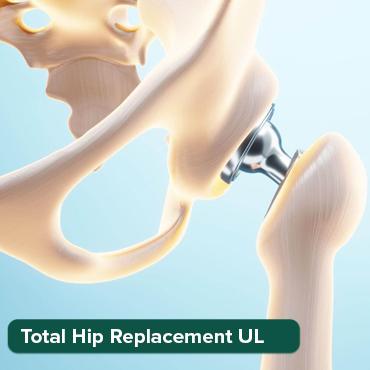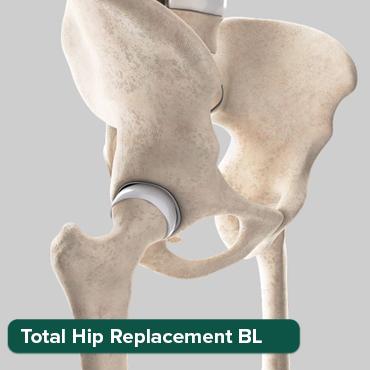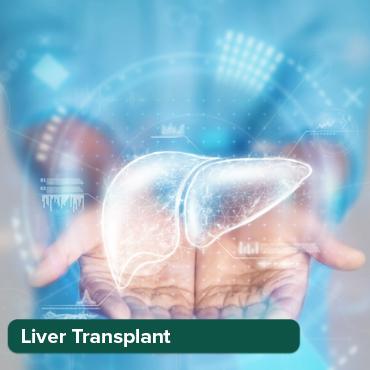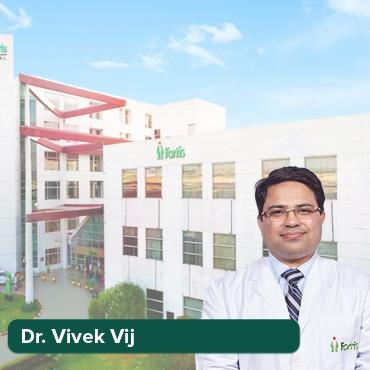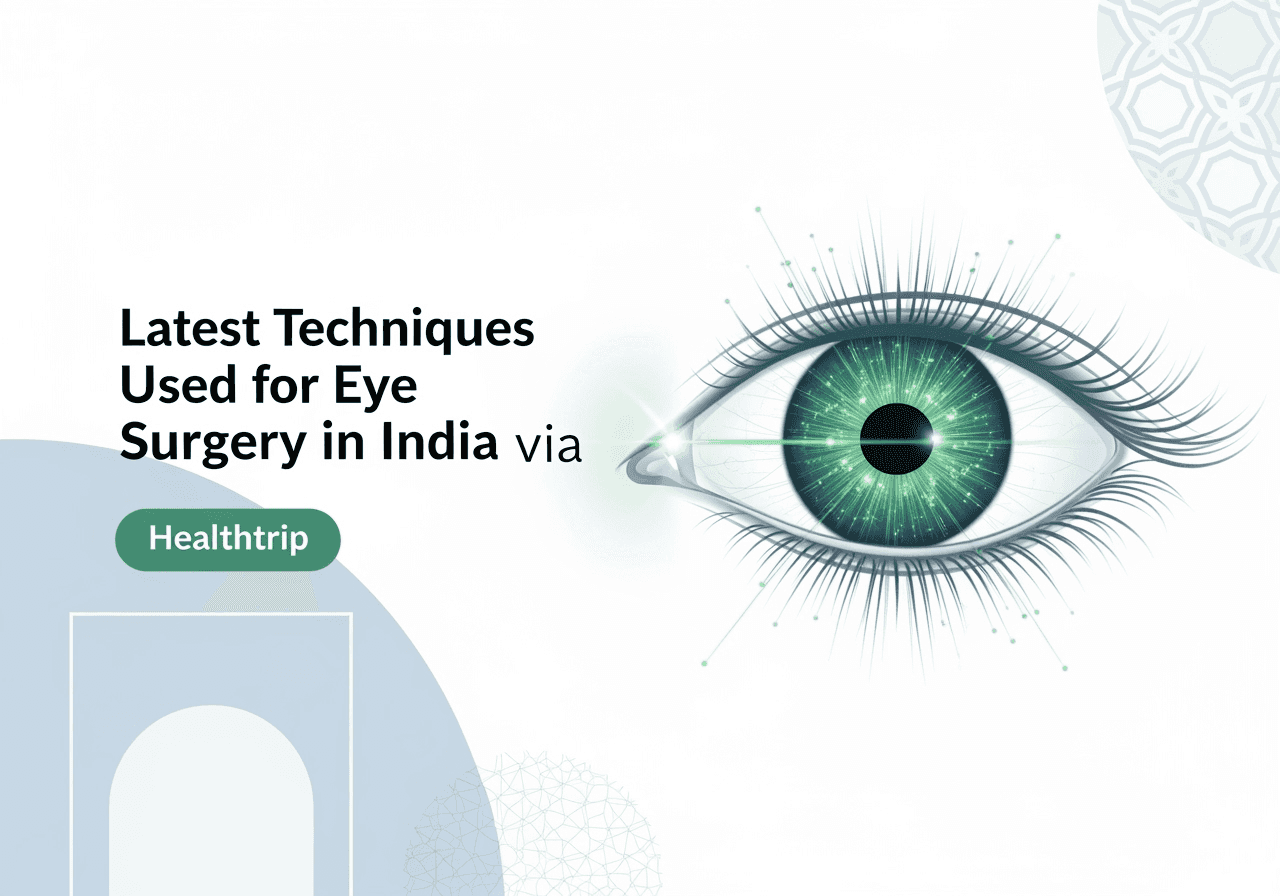
Latest Techniques Used for Eye Surgery in India via Healthtrip
16 Oct, 2025
 Healthtrip
Healthtrip- An Overview of Modern Eye Surgery in India
- Latest Advancements in Cataract Surgery
- LASIK and Refractive Surgery Innovations < li>Cutting-Edge Glaucoma Treatment Options
- Advanced Retinal Surgery Techniques
- Pediatric Eye Surgery: Specialized Approaches
- Top Hospitals for Eye Surgery in India
- Cost of Eye Surgery in India
- Conclusion
LASIK and SMILE: Refractive Surgery Redefined
Laser-Assisted In Situ Keratomileusis (LASIK) has long been a popular choice for correcting refractive errors like nearsightedness, farsightedness, and astigmatism. But the landscape of refractive surgery is constantly evolving, and newer techniques like Small Incision Lenticule Extraction (SMILE) are gaining traction. LASIK involves creating a thin flap on the cornea, reshaping the underlying tissue with a laser, and then repositioning the flap. SMILE, on the other hand, is a flapless procedure. A femtosecond laser creates a small, lens-shaped piece of tissue (lenticule) within the cornea, which is then removed through a tiny incision. Both procedures offer excellent results, but SMILE is often preferred for its reduced risk of dry eye and flap-related complications. For instance, Fortis Hospital, Noida, boasts advanced LASIK and SMILE technologies, ensuring patients receive personalized treatment plans. Ultimately, the best choice depends on your individual needs and eye anatomy, which a qualified surgeon at hospitals listed on Healthtrip website can help you determine. Think of refractive surgery as a personalized path to visual freedom – and at Healthtrip, we’re dedicated to making that journey smooth and stress-free!
Most popular procedures in India
Femtosecond Lasers: Precision at its Finest
The femtosecond laser has revolutionized eye surgery, bringing unparalleled precision and safety to various procedures. Unlike traditional mechanical instruments, femtosecond lasers use ultra-short pulses of light to create precise incisions and tissue separations. This technology minimizes the risk of complications and improves the accuracy of surgical outcomes. In LASIK, femtosecond lasers are used to create corneal flaps with exceptional precision. In cataract surgery, they can soften the cataract, allowing for easier and gentler removal. This laser precision is a game-changer, particularly for complex cases. Many hospitals such as Max Healthcare Saket are equipped with femtosecond lasers offering patients access to this cutting-edge technology. If you're considering eye surgery, ask your surgeon about the role of femtosecond lasers in your procedure. It could be the key to achieving the best possible results. At Healthtrip, we ensure the hospitals we collaborate with are at the forefront of technological advancements, offering you the safest and most effective treatment options.
Wellness Treatments
Give yourself the time to relax
Lowest Prices Guaranteed!

Lowest Prices Guaranteed!
Advances in Cataract Surgery
Cataract surgery has evolved from a daunting procedure to a remarkably safe and effective one. Modern techniques involve removing the cloudy lens and replacing it with an artificial intraocular lens (IOL). Phacoemulsification, the most common method, uses ultrasound energy to break up the cataract and gently suction it out. Femtosecond lasers, as mentioned earlier, are increasingly used to assist in cataract surgery, automating some of the most critical steps and enhancing precision. But the real breakthrough lies in the variety of IOLs available. Multifocal IOLs can correct both near and distance vision, reducing or even eliminating the need for glasses. Toric IOLs correct astigmatism, providing sharper vision. And accommodative IOLs mimic the natural focusing ability of the eye. For complex cases, hospitals like Fortis Memorial Research Institute, Gurgaon, have surgeons renowned for their expertise in using advanced IOL technologies. Remember, choosing the right IOL is a highly personalized decision that should be made in consultation with your ophthalmologist. With Healthtrip, we help you connect with leading surgeons and hospitals equipped with the latest IOL technologies, ensuring you get the best possible vision correction.
Premium Intraocular Lenses (IOLs): Customized Vision
Gone are the days when cataract surgery simply meant restoring basic vision. Today, premium IOLs offer the opportunity to achieve customized vision correction, often exceeding what was possible with glasses or contacts. Multifocal IOLs provide a range of vision, from near to far, reducing dependence on reading glasses. Toric IOLs correct astigmatism, resulting in sharper and clearer vision. And EDOF (Extended Depth of Focus) IOLs offer a continuous range of vision, minimizing the risk of halos and glare sometimes associated with multifocal lenses. The choice of IOL depends on your lifestyle, visual needs, and overall eye health. A detailed discussion with your surgeon at hospitals listed with Healthtrip is essential to determine which IOL is right for you. They will assess your specific needs and recommend the best option for achieving your desired visual outcome. With premium IOLs, cataract surgery is no longer just about restoring sight – it's about enhancing your quality of life and providing you with the best possible vision. At Healthtrip, we’re here to connect you with the experts who can make that happen.
Minimally Invasive Glaucoma Surgery (MIGS)
Glaucoma, a leading cause of blindness, damages the optic nerve, often due to increased pressure inside the eye. Traditionally, glaucoma treatment involved eye drops, laser therapy, or incisional surgery to lower eye pressure. However, Minimally Invasive Glaucoma Surgery (MIGS) has emerged as a revolutionary approach, offering a safer and less invasive way to manage glaucoma. MIGS procedures use tiny incisions and specialized devices to enhance the eye's natural drainage pathways, reducing intraocular pressure. These procedures can often be combined with cataract surgery, providing a convenient and effective solution for patients with both conditions. MIGS procedures are less invasive than traditional glaucoma surgeries and offer a quicker recovery time like the ones offered at Max Healthcare Saket. While MIGS may not be suitable for all types of glaucoma, it's a valuable option for many patients seeking to preserve their vision. If you're looking for a consultation, Healthtrip can connect you with hospitals equipped with the latest MIGS technologies, ensuring access to the most advanced glaucoma care.
iStent and Other MIGS Devices
Several MIGS devices are available, each designed to address different aspects of glaucoma. One of the most well-known is the iStent, a tiny titanium stent that is inserted into the eye's natural drainage channel to improve fluid outflow. Other MIGS devices include the Hydrus Microstent, which creates a scaffold in Schlemm's canal to enhance drainage, and the Kahook Dual Blade, which removes a portion of the trabecular meshwork to improve fluid outflow. These devices offer different mechanisms of action and may be more suitable for certain types of glaucoma or specific patient needs. Surgeons at hospitals like Fortis Memorial Research Institute, Gurgaon, carefully evaluate each patient's condition to determine the most appropriate MIGS device. The goal is to reduce intraocular pressure, slow down the progression of glaucoma, and preserve vision with minimal disruption to the eye. MIGS devices offer a significant advancement in glaucoma treatment and provide hope for patients seeking to maintain their eyesight. Healthtrip is dedicated to connecting you with leading specialists who can provide the best possible glaucoma care using these innovative technologies.
Corneal Transplants: Restoring Clarity
When the cornea becomes damaged or diseased, vision can be severely impaired. Corneal transplantation, also known as keratoplasty, involves replacing the damaged cornea with a healthy one from a donor. Traditional corneal transplants involve replacing the entire cornea, but newer techniques, such as partial-thickness transplants, are becoming increasingly common. Descemet's Stripping Automated Endothelial Keratoplasty (DSAEK) and Descemet's Membrane Endothelial Keratoplasty (DMEK) replace only the innermost layer of the cornea, resulting in faster recovery and fewer complications. These advanced techniques are particularly beneficial for patients with endothelial dysfunction, a common cause of corneal clouding. Corneal transplants can restore clarity and improve vision for patients with conditions such as keratoconus, corneal dystrophies, and corneal scarring. Hospitals listed on Healthtrip website have experienced corneal surgeons capable of performing a range of corneal transplant procedures. With the latest advancements in corneal transplantation, patients can look forward to improved outcomes and a better quality of life.
DALK and DMEK: Advanced Techniques
Deep Anterior Lamellar Keratoplasty (DALK) and Descemet's Membrane Endothelial Keratoplasty (DMEK) represent significant advancements in corneal transplant surgery. DALK involves replacing the front and middle layers of the cornea while leaving the patient's own Descemet's membrane and endothelium intact. This technique is often used for patients with keratoconus or corneal scarring, offering the benefits of a traditional corneal transplant with a reduced risk of rejection. DMEK, on the other hand, replaces only the Descemet's membrane and endothelium, the innermost layer of the cornea. This minimally invasive technique is ideal for patients with endothelial dysfunction, resulting in faster visual recovery and a lower risk of rejection. Hospitals like Max Healthcare Saket, are equipped with advanced diagnostic tools and surgical equipment to perform these complex procedures. If you're considering corneal transplantation, consult with a corneal specialist to determine which technique is best suited for your specific condition. Healthtrip can help you connect with experienced surgeons who are skilled in performing DALK and DMEK, ensuring you receive the best possible care.
An Overview of Modern Eye Surgery in India
Eye surgery in India has undergone a dramatic transformation in recent decades, emerging as a global hub for advanced ophthalmic care. What was once a niche field is now a thriving industry, blending cutting-edge technology with the expertise of highly skilled surgeons. This evolution has been fueled by several factors, including increased awareness of eye health, rising disposable incomes, and a growing demand for vision correction procedures. Think of it as a symphony of progress, where each advancement harmonizes to create a clearer, brighter future for patients seeking to improve their vision. Healthtrip plays a crucial role in connecting patients with the best eye care facilities in India, ensuring access to world-class treatments and personalized care plans. This commitment to patient empowerment is essential in navigating the complex landscape of modern eye surgery. Whether you're dealing with cataracts, refractive errors, or more complex conditions, the availability of state-of-the-art technology and skilled professionals means that clearer vision is within reach. From the bustling metropolis of Mumbai to the serene landscapes of Kerala, India offers a diverse range of ophthalmic centers equipped to handle a wide spectrum of eye-related issues. This accessibility, coupled with a focus on patient well-being, makes India a preferred destination for those seeking quality eye care at competitive prices.
The Rise of Ophthalmic Excellence
The rise of ophthalmic excellence in India can be attributed to a confluence of factors. One key element is the continuous investment in medical technology, with hospitals and clinics readily adopting the latest advancements in diagnostic and surgical equipment. This includes femtosecond lasers for cataract surgery, advanced imaging systems for glaucoma management, and sophisticated vitrectomy machines for retinal procedures. Beyond technology, the dedication and skill of Indian ophthalmologists play a pivotal role. Many have received extensive training both in India and abroad, bringing back valuable expertise and innovative techniques. Their commitment to research and development further contributes to the advancement of eye care in the country. Moreover, the emphasis on patient education and counseling ensures that individuals are well-informed about their treatment options and can make informed decisions about their care. Healthtrip is dedicated to providing the necessary information and resources to ensure patients are fully supported throughout their journey, guiding them toward the best possible outcomes. This comprehensive approach, combining technological prowess with human compassion, solidifies India's position as a leader in modern eye surgery.
Latest Advancements in Cataract Surgery
Cataract surgery has been revolutionized in recent years, moving from a daunting procedure to a routine and highly effective treatment. The latest advancements are focused on enhancing precision, minimizing invasiveness, and improving visual outcomes. Gone are the days of large incisions and lengthy recovery periods. Today, techniques like femtosecond laser-assisted cataract surgery (FLACS) and micro-incision cataract surgery (MICS) are the gold standard. FLACS uses a laser to create precise incisions, fragment the cataract, and correct astigmatism, all with unparalleled accuracy. MICS, on the other hand, involves even smaller incisions, resulting in less trauma to the eye and faster healing. These innovations, coupled with the use of advanced intraocular lenses (IOLs), are transforming the way cataracts are treated. Healthtrip helps connect you with clinics offering these advanced options, ensuring you receive the best possible care. Think of it as upgrading from a black and white TV to a vibrant, high-definition screen – the difference is truly remarkable. For those wary of surgery, understanding these advancements can be incredibly reassuring, offering hope for clearer vision and a better quality of life.
Intraocular Lenses: A New World of Vision
The development of advanced intraocular lenses (IOLs) has been a game-changer in cataract surgery. These lenses, implanted during the procedure, replace the eye's natural lens and restore clear vision. But it’s not just about restoring vision; it's about enhancing it. Multifocal IOLs can correct both near and distance vision, reducing or even eliminating the need for glasses. Toric IOLs are designed to correct astigmatism, providing sharper and clearer vision for those with irregular corneal shapes. And then there are accommodating IOLs, which mimic the natural focusing ability of the eye, offering a more seamless visual experience. Choosing the right IOL is a crucial decision, and it depends on individual needs and lifestyle. Healthtrip provides information and guidance to help patients navigate these options and select the lens that best suits their visual goals. Imagine being able to read a book, drive a car, and admire a distant landscape, all without reaching for your glasses. That's the promise of modern IOL technology. Facilities like Fortis Hospital, Noida and Max Healthcare Saket utilize advanced IOL technologies. This is about more than just seeing clearly; it's about reclaiming your visual freedom and enjoying the world to its fullest.
LASIK and Refractive Surgery Innovations
LASIK (Laser-Assisted In Situ Keratomileusis) has long been a popular option for vision correction, but the field of refractive surgery continues to evolve at an impressive pace. Innovations in laser technology, surgical techniques, and pre-operative assessments are making LASIK safer, more precise, and more effective than ever before. Custom LASIK, also known as wavefront-guided LASIK, uses advanced diagnostic tools to create a detailed map of the eye's imperfections, guiding the laser to correct vision with exceptional accuracy. Femtosecond LASIK, or bladeless LASIK, utilizes a laser to create the corneal flap, eliminating the need for a microkeratome blade and reducing the risk of complications. These advancements, combined with careful patient selection and thorough pre-operative evaluations, are leading to improved visual outcomes and higher patient satisfaction. Healthtrip provides access to the latest information and expert guidance to help individuals determine if LASIK is the right choice for them. Think of it as fine-tuning an instrument to achieve perfect harmony – the result is a clear, crisp, and natural vision, freeing you from the constraints of glasses and contact lenses.
Beyond LASIK: Exploring Alternative Refractive Procedures
While LASIK remains a cornerstone of refractive surgery, it's not the only option available. Several alternative procedures cater to individuals who may not be suitable candidates for LASIK due to thin corneas, dry eyes, or other factors. PRK (Photorefractive Keratectomy) is a surface ablation procedure that involves removing the outer layer of the cornea before reshaping it with a laser. SMILE (Small Incision Lenticule Extraction) is a minimally invasive procedure that uses a femtosecond laser to create a small lenticule within the cornea, which is then removed through a tiny incision. Refractive Lens Exchange (RLE) involves replacing the eye's natural lens with an artificial lens, similar to cataract surgery. Each of these procedures has its own set of advantages and disadvantages, and the best option depends on individual circumstances. Healthtrip can connect you with experienced ophthalmologists who can assess your eyes and recommend the most appropriate treatment plan. Facilities like Breyer, Kaymak & Klabe Augenchirurgie offer a wide range of refractive procedures. The key is to find a solution that addresses your specific needs and provides the best possible vision correction. This is about more than just achieving 20/20 vision; it's about finding a vision correction solution that fits your lifestyle and enhances your overall quality of life. For instance, Fortis Memorial Research Institute, Gurgaon provides refractive surgery options.
Also Read:
Cutting-Edge Glaucoma Treatment Options
Glaucoma, often dubbed the "silent thief of sight," is a sneaky condition that damages the optic nerve, gradually leading to vision loss. What makes it particularly concerning is that in its early stages, most people don't even realize they have it. Regular eye exams are crucial for early detection and management. Fortunately, advancements in medical technology have revolutionized glaucoma treatment. We're talking about more than just eye drops – although those are still a mainstay for many. Minimally invasive glaucoma surgery (MIGS) is gaining popularity. These procedures are designed to lower eye pressure with less trauma and faster recovery times compared to traditional surgeries. Imagine being able to manage your glaucoma with a procedure that barely disrupts your daily life! Selective laser trabeculoplasty (SLT) is another option, using laser energy to improve fluid drainage in the eye. It's like giving your eye's drainage system a little tune-up. Research is also exploring new drug delivery systems, such as sustained-release implants, to reduce the burden of daily eye drop administration. Staying informed and proactive is key to protecting your vision from glaucoma. With the right treatment plan and regular check-ups, you can keep this "silent thief" at bay and maintain clear eyesight for years to come.
Also Read:
Advanced Retinal Surgery Techniques
The retina, that delicate layer at the back of your eye, is responsible for capturing light and sending visual information to your brain. When retinal problems arise, such as diabetic retinopathy, macular degeneration, or retinal detachment, it can feel incredibly daunting. The good news is that retinal surgery has made leaps and bounds in recent years. Vitrectomy, a common procedure, involves removing the vitreous gel inside the eye to access the retina. Surgeons can then repair tears, remove scar tissue, or treat other issues. What’s truly remarkable is the precision with which these surgeries are now performed. We're talking about incredibly small incisions and sophisticated instruments that allow surgeons to work with exceptional accuracy. Techniques like laser photocoagulation are used to seal leaking blood vessels in conditions like diabetic retinopathy. It's akin to spot-welding tiny vessels to prevent further damage. For macular degeneration, treatments like anti-VEGF injections are used to slow the progression of the disease. These injections target specific proteins that contribute to the overgrowth of blood vessels in the macula. With these advanced techniques, retinal surgeons are saving sight and improving the quality of life for countless individuals. If you’re facing a retinal condition, exploring these options can be a game-changer.
Pediatric Eye Surgery: Specialized Approaches
When it comes to our little ones, we only want the best, and that includes their vision. Pediatric eye surgery requires a different approach than adult eye surgery. Children's eyes are still developing, and their needs are unique. Conditions like strabismus (crossed eyes), amblyopia (lazy eye), and congenital cataracts require specialized care. Strabismus surgery aims to realign the eyes, allowing them to work together properly. It's like teaching the eyes to cooperate and focus on the same point. Amblyopia treatment often involves patching the stronger eye to encourage the weaker eye to develop. It's a bit like giving the weaker eye a chance to catch up and become stronger. Congenital cataracts, which are present at birth, require early surgical intervention to prevent vision loss. Imagine the impact of restoring clear vision to a child who has never experienced it. Pediatric ophthalmologists are specially trained to handle these delicate cases, understanding the nuances of children's eye development. They create a comfortable and supportive environment for both the child and their parents, ensuring the best possible outcome. Seeing a child's face light up with clear vision after surgery is one of the most rewarding experiences, and with specialized pediatric eye surgery, it's becoming more common every day. Hospitals like Fortis Hospital, Noida Fortis Hospital, Noida and Max Healthcare Saket Max Healthcare Saket often have dedicated pediatric ophthalmology units.
Top Hospitals for Eye Surgery in India
India has emerged as a global hub for medical tourism, offering world-class eye surgery at competitive prices. Several hospitals across the country have gained recognition for their expertise, cutting-edge technology, and patient-centered care. Fortis Memorial Research Institute, Gurgaon Fortis Memorial Research Institute, Gurgaon, for example, is known for its comprehensive ophthalmology services, including advanced cataract surgery, LASIK, and retinal treatments. Their skilled surgeons and state-of-the-art facilities attract patients from around the world. Max Healthcare Saket Max Healthcare Saket is another leading hospital with a dedicated eye care department. They offer a wide range of treatments, from routine eye exams to complex surgical procedures. The hospital's commitment to quality and patient safety makes it a preferred choice for many. Additionally, smaller, specialized eye clinics often provide excellent care and personalized attention. When choosing a hospital for eye surgery, it's crucial to consider factors like the surgeon's experience, the hospital's reputation, and the availability of advanced technology. Healthtrip can assist you in finding the best hospitals and surgeons in India based on your specific needs and preferences. With the right choice, you can ensure a successful outcome and improved vision. Always do your research and consult with multiple specialists before making a decision.
Cost of Eye Surgery in India
One of the major factors drawing international patients to India for eye surgery is the cost. Compared to developed countries, the cost of eye surgery in India is significantly lower, often by as much as 50-80%. This affordability doesn't compromise the quality of care, as Indian hospitals boast highly skilled surgeons and modern technology. Cataract surgery, for instance, can cost a fraction of the price in India compared to the US or Europe. LASIK and other refractive surgeries also offer substantial savings. The exact cost will vary depending on the type of surgery, the hospital you choose, and the specific technology used. However, even with these variations, the overall cost remains highly competitive. Many hospitals also offer package deals that include accommodation, meals, and transportation, making the entire process even more convenient and cost-effective. Healthtrip can help you compare the costs of different hospitals and procedures, ensuring you get the best value for your money. Understanding the cost breakdown and exploring your options can make eye surgery in India a financially smart choice for those seeking quality care without breaking the bank. Don't hesitate to reach out to Healthtrip for personalized cost estimates and assistance with your medical travel planning.
Conclusion
The realm of eye surgery is constantly evolving, offering new hope and improved outcomes for people facing vision challenges. From minimally invasive glaucoma treatments to advanced retinal surgery techniques and specialized pediatric care, the possibilities are truly remarkable. India has firmly established itself as a leading destination for eye surgery, offering world-class expertise, cutting-edge technology, and affordable prices. Whether you're considering cataract surgery, LASIK, or treatment for a more complex condition, exploring your options in India can be a life-changing decision. Hospitals like Fortis Memorial Research Institute, Gurgaon Fortis Memorial Research Institute, Gurgaon and Max Healthcare Saket Max Healthcare Saket are at the forefront of this revolution, providing exceptional care and ensuring the best possible results. Healthtrip is dedicated to guiding you through this journey, from finding the right hospital and surgeon to navigating the logistics of medical travel. With our support, you can make informed decisions, access high-quality care, and achieve the clear, healthy vision you deserve. Don't let vision problems hold you back any longer. Take the first step towards a brighter future by exploring the possibilities of modern eye surgery in India.
Related Blogs

Why Second Opinions Matter Before Eye Surgery Doctors Explain
Deep medical insights, treatment comparisons, safety standards, and technological updates

International Patients' Guide to Understanding Eye Surgery Terminology
Deep medical insights, treatment comparisons, safety standards, and technological updates

How Healthtrip Ensures Patient Safety During Eye Surgery Procedures
Deep medical insights, treatment comparisons, safety standards, and technological updates

Choosing Between Treatment Options for Eye Surgery
Deep medical insights, treatment comparisons, safety standards, and technological updates

How to Read Your Medical Reports Before Eye Surgery
Deep medical insights, treatment comparisons, safety standards, and technological updates

Breakthrough Medical Technologies Transforming Eye Surgery in India
Deep medical insights, treatment comparisons, safety standards, and technological updates
